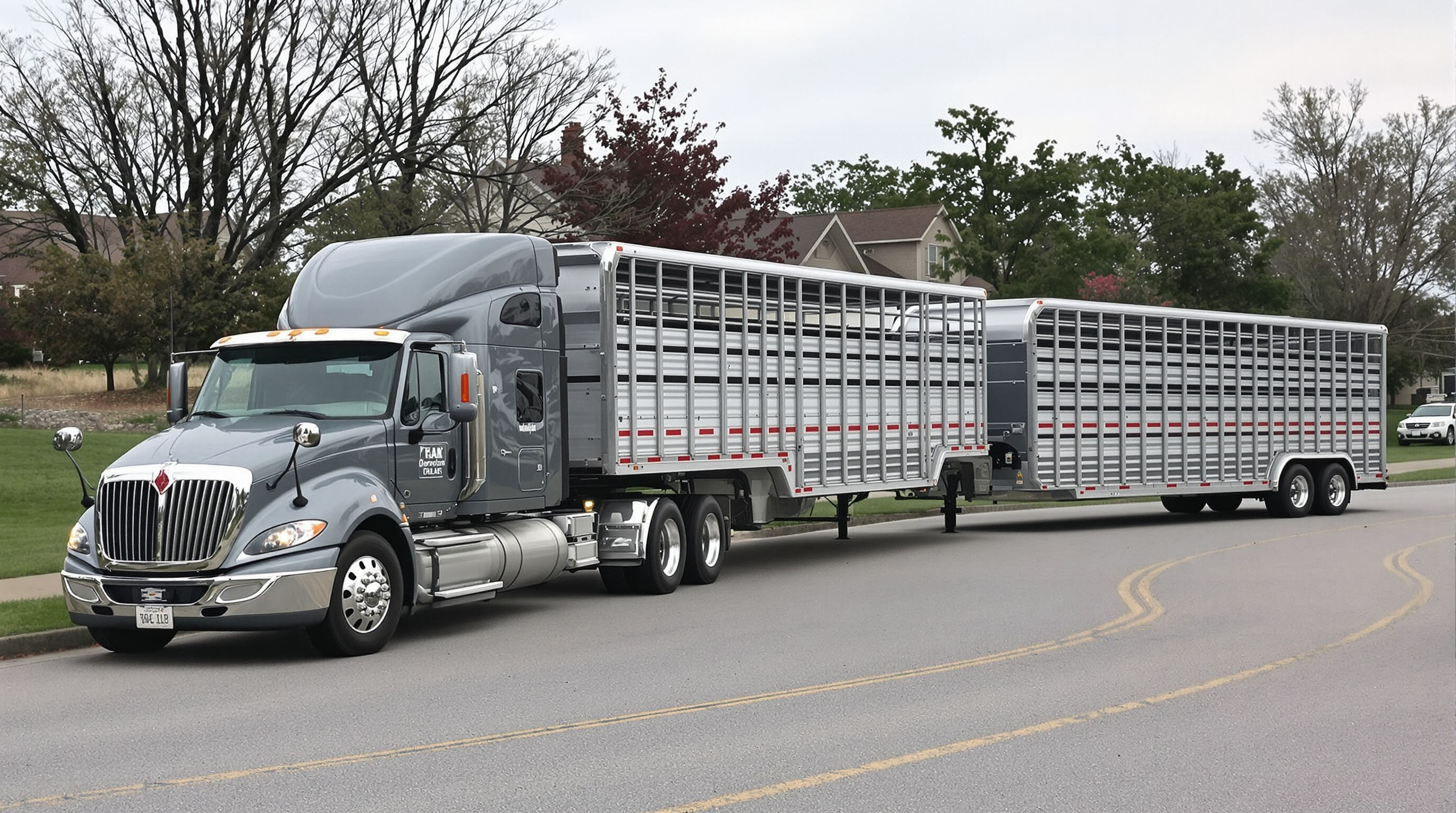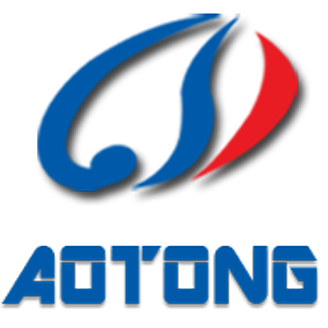What Design Features Are Needed in a Livestock Trailer?
Trailer Size and Configuration for Different Livestock Types
Matching Trailer Dimensions to Livestock Type and Quantity
When choosing a livestock trailer, getting the right size matters a lot depending on what kind of animals we're talking about and how many there are. Cows actually take up around 20 to maybe even 30 percent more room on the floor compared to horses because they stand wider apart. Sheep are different too; they need smaller spaces but with good airflow so nobody gets smothered during transport. Take a standard single deck 24 foot trailer for instance. Most folks find that it holds somewhere between eight and ten full grown cows or about twelve to fifteen horses normally. But watch out if some animals are expecting calves or hurt somehow. The carrying capacity just plummets by roughly forty percent then, which everyone needs to remember before loading up.
Optimal Height, Length, and Width for Cattle, Horses, and Sheep
Tailored configurations reduce injury and stress during transport:
| Species | Minimum Height | Floor Space per Animal | Recommended Wall Type |
|---|---|---|---|
| Cattle | 6.5 ft | 12–15 sq ft | Slatted (1.5" gaps) |
| Horses | 7.5 ft | 10–12 sq ft | Solid (rubber-lined) |
| Sheep | 4 ft | 4–5 sq ft | Slatted (1" gaps) |
Horse trailers benefit from taller ceilings to allow head movement, while slatted walls on cattle and sheep units enhance airflow without compromising containment.
Avoiding Overcrowding: Compliance With Animal Transport Regulations
According to the USDA Transport Guidelines from 2023, there needs to be at least a 20% space between animals while they're being transported. Industry audits show that this rule gets broken in about one out of every three hauls though. When animals get too crowded together, their chances of getting injured jumps by nearly 60%. And if caught violating these rules, companies face penalties reaching as high as $2,500 for each infraction under federal animal welfare regulations. A recent study done back in 2024 by Iowa State University looked at how different trailer types affect livestock comfort. They found that using temperature controlled trailers cuts down on heat stress problems during hot weather transportation by around 40% compared to regular non ventilated ones.
Structural Integrity and Environmental Control Systems
Steel vs. aluminum frames: Durability and maintenance trade-offs
Steel frames provide superior strength, offering a 27% higher load-bearing capacity than aluminum (Agricultural Transport Safety Report 2023). However, aluminum’s corrosion resistance reduces long-term maintenance costs by approximately 18% in coastal or high-humidity environments, making it ideal for operations in wet climates.
Non-slip flooring solutions for animal traction and safety
Textured rubber flooring or epoxy-coated diamond plate improves hoof traction by 40% over smooth surfaces, reducing slips during sudden stops. These materials also resist damage from frequent cleaning with disinfectants, supporting biosecurity compliance.
Ventilation systems for temperature and airflow control
Roof-mounted vents combined with adjustable side panels maintain airflow at 35–50 CFM per animal, preventing heat stress in warm weather. In colder conditions, baffled intake vents minimize drafts while ensuring adequate air exchange.
Interior lighting to reduce animal stress during transit
LED lighting emitting 400–500 lux—mimicking natural daylight—reduces cortisol levels in transported livestock by 22% compared to fluorescent lighting, promoting calmer behavior throughout the journey.
Exterior lighting and signaling for road safety and visibility
DOT-compliant 7-function lighting paired with reflective conspicuity tape enhances side visibility by 60% in low-light conditions, improving safety during multi-lane highway travel.
Hitch Type and Towing Stability: Gooseneck vs. Bumper Pull

Comparative Analysis of Gooseneck and Bumper Pull Hitch Performance
Gooseneck hitches connect right to the truck frame underneath the bed area, giving about 15 to maybe even 25 percent better weight distribution compared to those bumper pull trailers, as per what NHTSA says about towing safety in their 2023 guidelines. The way these work actually cuts down on trailer sway because around twenty to thirty percent of the trailer weight sits right over the rear wheels of the truck. That matters a lot when transporting delicate cargo such as horses who get spooked easily. Bumper pull trailers do have their advantages though, especially for moving smaller groups of animals where getting into tight spaces is important. But there's a downside too. Since they hook up at the back end, this creates more pivot points that can cause problems when stopping suddenly. And guess what? According to accident reports from NHTSA back in 2022, roughly 37 out of every 100 livestock transport incidents were linked to this kind of setup.
Weight Distribution and Load Capacity Implications by Hitch Type
| Feature | Gooseneck | Bumper Pull |
|---|---|---|
| Max Load Capacity | 30,000 lbs | 15,000 lbs |
| Weight Transfer | Over rear axle | Behind rear axle |
| Turn Radius | 15% tighter | Standard |
Gooseneck systems support heavier legal loads—essential for hauling 10+ cattle—and help prevent the “tail-wags-truck” effect common in bumper pull trailers exceeding 12,000 lbs. Always ensure your vehicle’s Gross Vehicle Weight Rating (GVWR) matches the fully loaded trailer weight.
Real-World Towing Stability: Insights from Farmers and NHTSA Data
According to dairy farmers who've actually used them, gooseneck trailers cut down emergency stops during cattle transport by around 58% compared with those old bumper pull models, according to last year's National Dairy Transport Survey. The NHTSA numbers back this up too showing that those bumper pulls are way more likely to roll over on highways, roughly 2.3 times more so than goosenecks, particularly if they're not loaded properly from side to side. Most experienced haulers will tell anyone willing to listen that for moving sheep across country distances, nothing beats a good gooseneck setup because it tracks much better through those tricky mountain roads and makes loading operations smoother overall, even though some folks still stick with what they know.
Interior Design Features for Animal Safety and Comfort
Minimizing Injury and Stress With Safe Interior Design
When designing livestock trailers, it makes sense to include non-slip surfaces inside along with plenty of space for animals to move around without getting stuck. Studies from the Journal of Animal Transport back this up, showing that textured rubber floors cut down on injuries by about one third compared to regular metal surfaces. Plus, these floors often come with built-in drains that help keep things from getting too wet. The design also matters elsewhere in the trailer. Rounded corners instead of sharp ones, plus latches that sit flush against walls rather than sticking out, all help prevent accidents where animals might get hurt or tangled up. These kinds of improvements are actually required under current UK animal welfare regulations for good reason.
Adjustable Partitions and Non-Swinging Dividers for Flexible Loading
Vertical sliding dividers let operators customize compartment sizes for different animals, preventing overcrowding during mixed-species hauls. Locking mechanisms on non-swinging partitions maintain stability during abrupt stops, cutting crush injuries by 22% in cattle trailers (USDA 2023). These features support compliance with EU Regulation 1/2005 requirements for minimum floor space per animal.
Solid vs. Slatted Walls: Balancing Airflow, Visibility, and Containment
- Solid walls: Shield temperature-sensitive animals from wind but require additional ventilation
-
Slatted designs: Provide 360° airflow—especially important for poultry—and allow visual contact among herd members
Hybrid walls with solid lower sections and slatted upper panels reduce respiratory issues by 18% in sheep trials (Livestock Science Quarterly 2023).
Loading Ramp Design and Safety Mechanisms
Adjustable Ramps for Diverse Terrain and Livestock Types
Trailer ramps need to handle all sorts of different loading situations. The angle can usually be adjusted anywhere from about 10 degrees to around 30 degrees depending on whether we're dealing with those tall bed trucks or just regular ground level pens. Most telescoping models are built with either reinforced aluminum or steel frames and they typically hold around 3,000 pounds while still working pretty well on rough or uneven ground. For hoofed animals like sheep, many ramps come with rubber coatings that give better traction. And when it comes to bigger animals such as cattle, going for the wider 48 inch version makes sense since it helps them walk straight instead of trying to step sideways which can cause problems during transport.
Safety Gates to Prevent Forward Movement During Loading
Heavy-duty swing gates positioned 18–24 inches from the ramp top, equipped with dual-latch systems, prevent premature entry into the trailer. These meet EU Regulation 1/2005 standards requiring 40 kg/cm² gate strength for large animals. Farmers report a 57% reduction in escape incidents when using gated ramps.
Ramp vs. Step-Up Entry: Efficiency and Animal Behavior Impact
Step-up entries (14–20 inches high) work well for horses and smaller livestock, leveraging natural jumping instincts to speed loading. Ramps are essential for older cattle and pigs, with USDA studies showing they enable 23% faster load times. Behavioral observations indicate step-ups reduce hesitation by 40% in flighty species such as goats.
Manual vs. Hydraulic Ramp Systems: Practicality and Reliability
Manual ramps offer dependable operation in remote locations, while hydraulic systems allow one-person control with precise angle adjustment—particularly useful when handling 1,500-pound bulls. A 2023 Agricultural Engineering Journal study found hydraulic units require 2.3 times more maintenance but reduce livestock injuries by 19% through smoother transitions.
FAQs
What are the recommended trailer dimensions for transporting cattle?
Cattle trailers should have a minimum height of 6.5 feet and provide 12–15 square feet of floor space per animal.
Why should trailers have slatted walls?
Slatted walls enhance airflow and prevent animals from being smothered during transport.
What are the benefits of using temperature controlled trailers?
Temperature controlled trailers help reduce heat stress in livestock by about 40% during transportation in hot weather.
Should I choose a gooseneck or bumper pull hitch for my trailer?
A gooseneck hitch provides better weight distribution and stability, especially for larger loads, whereas a bumper pull trailer is suitable for smaller loads and easier maneuverability.
How do adjustable partitions in trailers benefit livestock?
Adjustable partitions allow for flexible loading and prevent overcrowding, minimizing the risk of injuries during transport.





